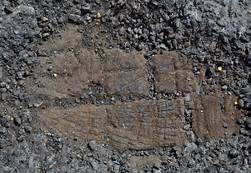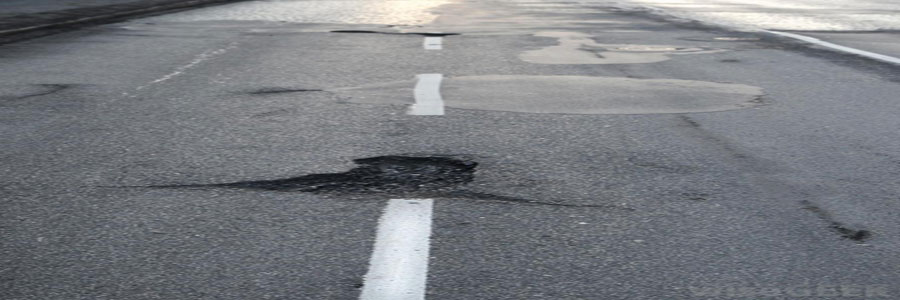 Some years ago I acted on behalf of a Manchester lady who injured her ankle whilst walking on a suburban street near her home. She had been to the shops and was walking back at dusk wearing trainers when, as a consequence of a rut in the road not far from her house, she stumbled and twisted her ankle.
Some years ago I acted on behalf of a Manchester lady who injured her ankle whilst walking on a suburban street near her home. She had been to the shops and was walking back at dusk wearing trainers when, as a consequence of a rut in the road not far from her house, she stumbled and twisted her ankle.
She contacted me to advise on whether or not she had a claim for damages as a result of the Council failing to repair the road.
At this stage it is imperative that the solicitor acting for the claimant has a good look at the tripping scene. It is simply no use relying on the claimant’s own recollection, their photographs, or even the photographs and measurements of a local agent. “Eyes on” is an absolute necessity.
What first became apparent, having viewed the road, was what an absolutely dreadful state of disrepair the road was in. There were literally dozens of other pot holes. The tarmac finish to the road surface was pitted with large cracks in it, the kerbs were displaced in numerous positions and the paving slabs were uneven.
 I photographed the entire road, measured numerous defects and highlighted the extremely poor condition of the road.
I photographed the entire road, measured numerous defects and highlighted the extremely poor condition of the road.
A Letter of Claim was submitted to the local Council and a prompt denial of responsibility and legal liability was received. I would like to say this surprised me but, all too often, The Highway Authority in the guise of the local Council deny responsibility, even when it is obvious and apparent the pavement and road where the accident took place is in a very poor state of repair.
Now don’t get me wrong, any Defendant is entitled to run a defence. In this particular instance, we do not have strict liability. The law pertaining to Highway Tripping Claims is contained within The Highways Act 1980.
Section 58 of The Highways Act 1980 gives the local Council a defence. This section states that if they have a reasonable system of inspection, maintenance and repair of the road, then they have fulfilled their legal obligation. Pot holes occur , as long as they repair them in a reasonable time then the council have fulfilled their obligations under the law.
It is a question of fact in each and every case as to whether or not the system of inspection is, in fact, ‘reasonable’. Obviously, the more defects on the road, the less they inspect, the less they repair and the less they maintain the less likely it is that the inspection system is reasonable.
When pursuing any type of claim it is important to get full disclosure from the Defendants. The Defendants are obliged to disclose any documents that they wish to use in support of their defence. In this particular instance we are talking about the inspection records for the highway.
At first blush, it appeared that The Highway Authority had, in fact, inspected relatively frequently. However, the condition of the road seemed to suggest that despite the inspections, they had not actually repaired the road. Indeed, when we pressed the Council for full disclosure this revealed a further document from The Highway Authority, suggesting that this road was suitable for complete reinstatement i.e. the road surface should be completely re-laid. Now, there is no way the local Council are going to spend money if it is not absolutely necessary. This document, therefore, proved that despite their assertions in other correspondence that they knew the road was in a poor state of repair.
 Furthermore, our subsequent inspections of the road revealed that, whilst they repaired the rut over which my Client had stumbled over, they didn’t bother repairing all the other numerous defects, pot holes, ruts and cracks in the tarmac. In my opinion, the system of inspection, repair and maintenance was not, therefore, reasonable. Some months later we ended up at the Manchester County Court, at a full trial. The Claimant was cross-examined carefully and cleverly by the Council’s barrister. Her story was simple and she stuck to it, she had been to the shop, she’d come home, she stumbled on the way as a consequence of the rut. She had positively identified the defect.
Furthermore, our subsequent inspections of the road revealed that, whilst they repaired the rut over which my Client had stumbled over, they didn’t bother repairing all the other numerous defects, pot holes, ruts and cracks in the tarmac. In my opinion, the system of inspection, repair and maintenance was not, therefore, reasonable. Some months later we ended up at the Manchester County Court, at a full trial. The Claimant was cross-examined carefully and cleverly by the Council’s barrister. Her story was simple and she stuck to it, she had been to the shop, she’d come home, she stumbled on the way as a consequence of the rut. She had positively identified the defect.
The case turned on whether or not the system of inspection was, in fact, reasonable. The mass of evidence, photographs and sketch maps prepared by ourselves on numerous visits to the accident scene, showed that defects remained in place before and after inspections and before and after supposed repairs had taken place. Our cross examination of the Council’s Highway Inspector confirmed his view that the road was in a poor state of repair, otherwise why would he have advised the Council that the road needed complete reinstatement.
The Judge heard all the evidence and took very little time in finding in favour of the Claimant and awarding full damages and costs. Please visit www.treadstonelaw.co.uk or contact email claim@treadstonelaw.co.uk


 Some years ago I acted on behalf of a Manchester lady who injured her ankle whilst walking on a suburban street near her home. She had been to the shops and was walking back at dusk wearing trainers when, as a consequence of a rut in the road not far from her house, she stumbled and twisted her ankle.
Some years ago I acted on behalf of a Manchester lady who injured her ankle whilst walking on a suburban street near her home. She had been to the shops and was walking back at dusk wearing trainers when, as a consequence of a rut in the road not far from her house, she stumbled and twisted her ankle.